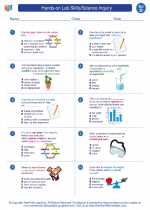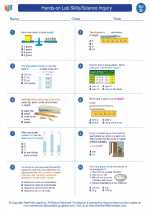Diffraction
Diffraction is the bending of waves around obstacles and the spreading of waves as they pass through openings. This phenomenon occurs with all types of waves, including sound waves, water waves, and light waves.
Causes of Diffraction
Diffraction occurs when a wave encounters an obstacle or passes through an opening that is comparable in size to the wavelength of the wave. When this happens, the wave bends around the obstacle or spreads out after passing through the opening, resulting in diffraction patterns.
Diffraction of Light
When light waves encounter a narrow slit or a sharp edge, they diffract and produce a pattern of alternating light and dark bands known as diffraction patterns. This phenomenon is commonly observed in experiments with laser light passing through a narrow slit.
Applications of Diffraction
Diffraction is widely used in various scientific and technological applications, including:
- Diffraction gratings for analyzing the components of light and creating spectral patterns
- Diffraction in X-ray crystallography for determining the atomic and molecular structure of materials
- Diffraction in sound waves for creating directional patterns in audio devices
Study Guide
To understand diffraction better, consider the following study guide:
- Define diffraction and explain the conditions under which diffraction occurs.
- Describe the diffraction of light and the appearance of diffraction patterns.
- Discuss the practical applications of diffraction in various fields such as physics, chemistry, and engineering.
- Perform simple experiments to observe diffraction patterns using light, sound, or water waves.
- Compare and contrast diffraction with other wave phenomena such as interference and polarization.
By studying diffraction and its applications, you can gain a deeper understanding of wave behavior and its significance in various scientific disciplines.
.◂Science Worksheets and Study Guides Fourth Grade. Hands-on Lab Skills/Science Inquiry

 Worksheet/Answer key
Worksheet/Answer key
 Worksheet/Answer key
Worksheet/Answer key
 Worksheet/Answer key
Worksheet/Answer key
